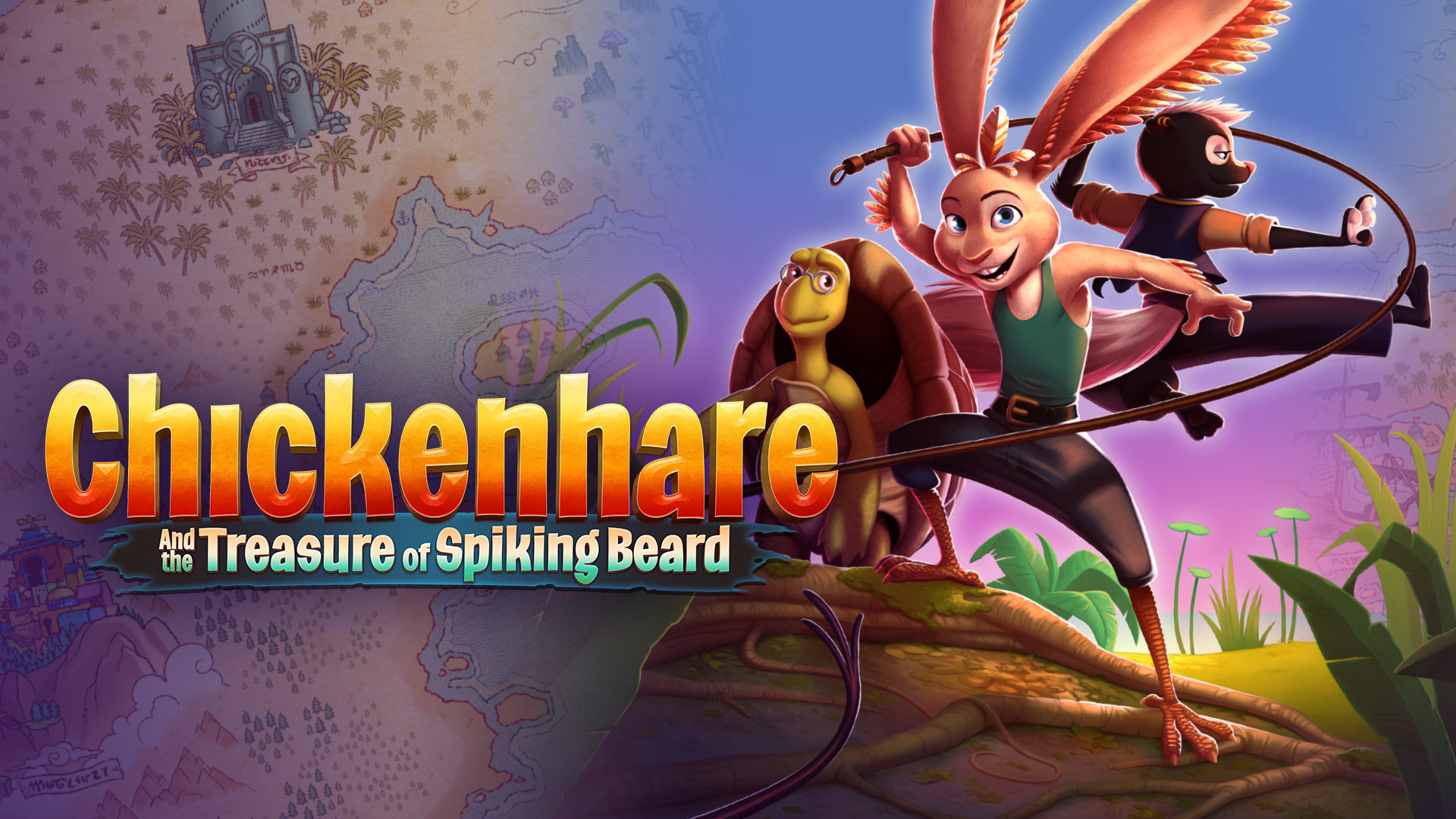Heretic + Hexen Gets a Surprise Re-Release: How Nightdive Studios Delivered Another Definitive Version of a Classic
August 7, 2025
Heretic + Hexen Gets a Surprise Re-Release: How Nightdive Studios Delivered Another Definitive Version of a Classic
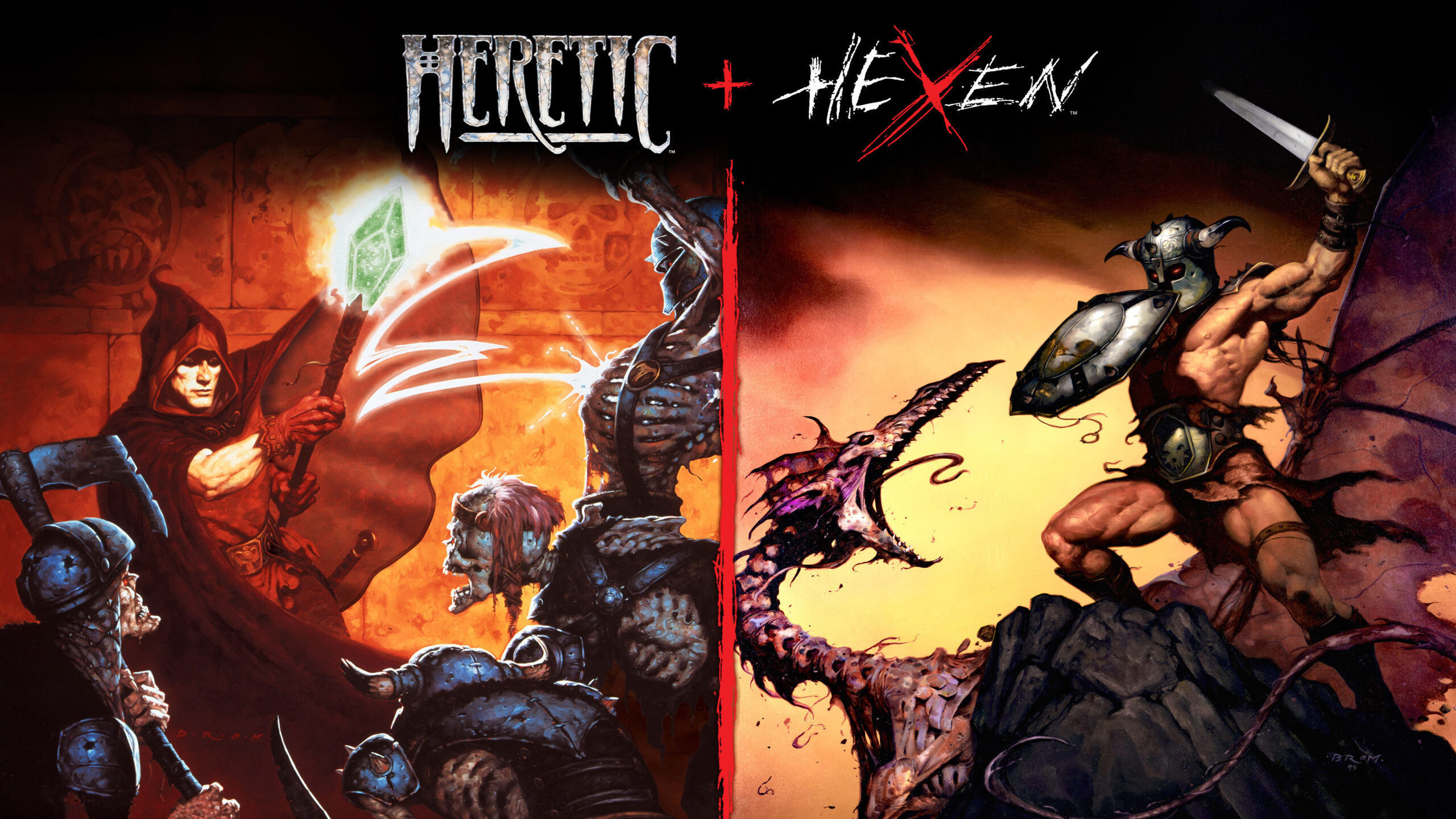
Summary
- Heretic + Hexen returns as a surprise, enhanced multi-platform re-release at QuakeCon 2025 – and it’s out today.
- We talk with the creative team at Nightdive Studios about what they’ve improved upon, and what new features players can look forward to.
- Heretic + Hexen is available today for Xbox One, Xbox Series X|S and Xbox PC (as an Xbox Play Anywhere title, and available with Game Pass) as well as PlayStation 4, PlayStation 5, Nintendo Switch, Steam, GOG, and is coming soon to the GeForce Now and Boosteroid cloud streaming services.
The FPS boom of the ’90s gave us an embarrassment of riches when several soon-to-be-iconic franchises began to take shape — and gaming hasn’t been the same since. Alongside games like DOOM, Wolfenstein 3D, and Quake, Heretic, and Hexen helped lay the groundwork for a budding genre that has only grown in popularity since.
Over the last few years, id Software and Bethesda have partnered with Nightdive Studios to revisit many of these classics with a level of care and attention to detail that makes returning to these games immensely enjoyable experiences, both as a player and as an interactive piece of gaming preservation. Nightdive’s recent restorations of the excellent DOOM I + II, Quake II, and most recently System Shock 2: 25th Anniversary Remaster, give the feeling of a studio cementing their reputation for creating definitive versions of some truly iconic games.
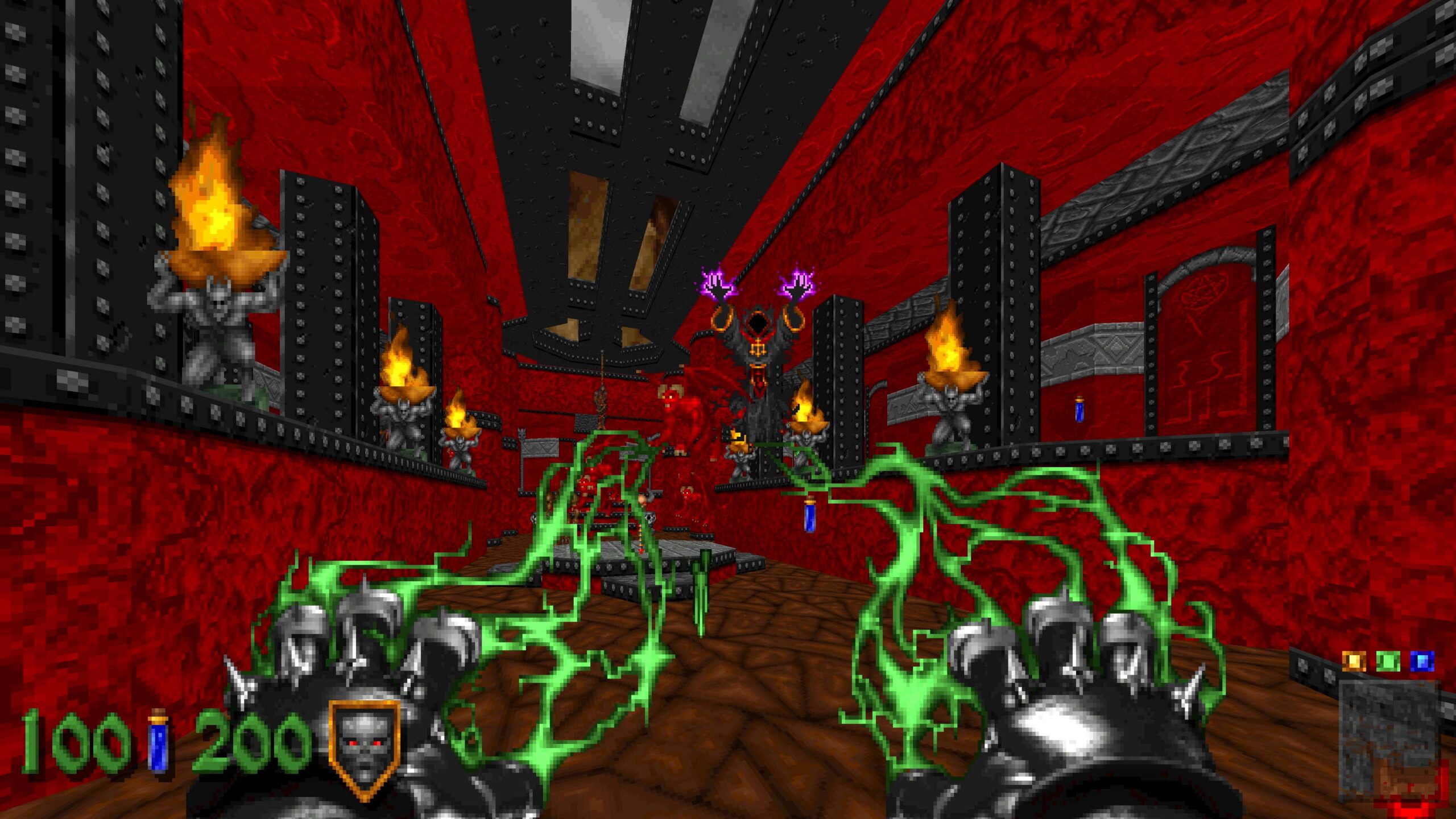
Now they’ve turned their attention to two more games that are rooted deeply in id’s rich legacy with the re-release of Heretic + Hexen, announced at QuakeCon 2025 and available today across a variety of platforms, including Xbox One, Xbox Series X|S, Xbox PC, with support for Xbox Play Anywhere and with Game Pass.
Originally released in 1994 and 1995 respectively, developed by Raven Software and produced by id Software, Heretic and Hexen became essential pieces of gaming history, especially within the FPS genre. By pioneering features such as an inventory system, the ability to look up and down, ambient sound effects, and many others, both games would achieve critical acclaim and, later, a cult-like status amongst fans of the genre. They set themselves apart from the rest of the genre by dabbling with high fantasy themes, placing enchanted staves in our hands, and letting us battle undead knights and other nefarious beings.
Fast forward to today, and the Heretic + Hexen enhanced re-release features all that original ingenuity, bolstered by a tremendous number of improvements and new features. First off, performance has been improved, with up to 4K resolution and 120 FPS on supported hardware, plus a variety of texture enhancements. The game also delivers a remixed soundtrack created by Andrew Hulshult (DOOM + DOOM II, DOOM Eternal: The Ancient Gods parts One and Two, Quake Champions), in-game support for community-published mods, local split-screen for up to 4 or 8 players, depending on platform, and online crossplay multiplayer support for up to 16 players. For the gaming history buffs, a bunch of behind-the-scenes content is available for you to explore the development journey of Heretic + Hexen. And perhaps best of all, individuals from Nightdive and id Software have collaborated to create two brand-new episodes to play through: Heretic: Faith Renewed and Hexen: Vestiges of Grandier.

To learn more about the work Nightdive Studios put into restoring Heretic + Hexen, we talked with Studio Head Stephen Kick, and Developers Matthew Tropiano and Jaemen Moore about bringing these classics back to life, what new features they’ve implemented, and what new things they’ve cooked up.
What has it been like to revisit these two iconic first-person shooters, Heretic and Hexen, after all these years?
Studio Head Stephen Kick: Revisiting Hexen and Heretic has been both a nostalgic journey and a technical challenge in the best way possible. It’s incredibly rewarding to give longtime fans a faithful experience that plays the way they remember it — and to introduce a new generation to the arcane magic and brutal challenge of these cult classics.
For those who may not have played them, or perhaps even heard of them, can you describe these games?
Kick: Heretic and Hexen are dark fantasy first-person shooters originally developed by Raven Software [and published by id Software] in the mid-’90s, using the DOOM engine as a foundation — but they carved out a very different identity. Instead of shotguns and space marines, you’re wielding enchanted staves, throwing fireballs, and battling undead knights, serpent riders, and demonic cults in gothic, otherworldly environments.
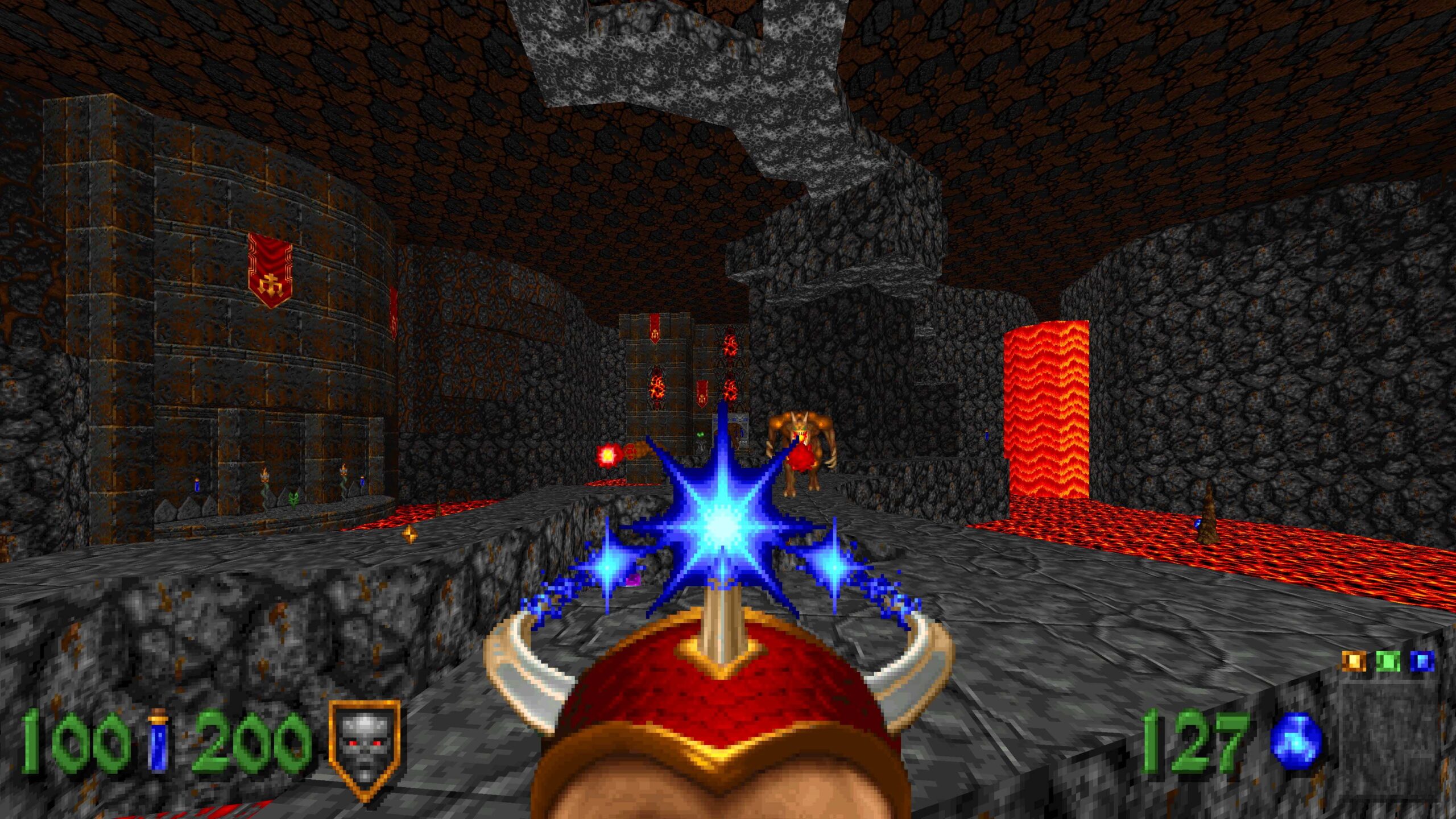
Together, they helped define what a dark fantasy FPS could be — blending the visceral action of DOOM with the atmosphere and mechanics you’d expect from a Dungeons & Dragons campaign. They’re cult classics for a reason, and revisiting them now offers a chance to experience that unique blend of magic, menace, and mayhem with a fresh coat of paint.
Is there anything in these games that you’d like to see in modern titles?
Kick: Absolutely. One of the most striking things about Heretic and Hexen is how bold they were in experimenting with mechanics that were way ahead of their time. Hexen especially took real risks: non-linear hub worlds, character classes with unique playstyles, persistent progression between levels, and environmental puzzles that required actual observation and memory. It asked players to engage with the world, not just run and gun through it.
We’d love to see more modern titles embrace that kind of design confidence — trusting players to get a little lost, think critically, and discover things through exploration instead of hand-holding. There’s also a certain tone these games nailed: that grim, arcane, almost oppressive atmosphere, where the world feels ancient, cursed, and alive in a way that’s rare even today. More games could benefit from that kind of worldbuilding, where the setting isn’t just a backdrop but a character in itself.
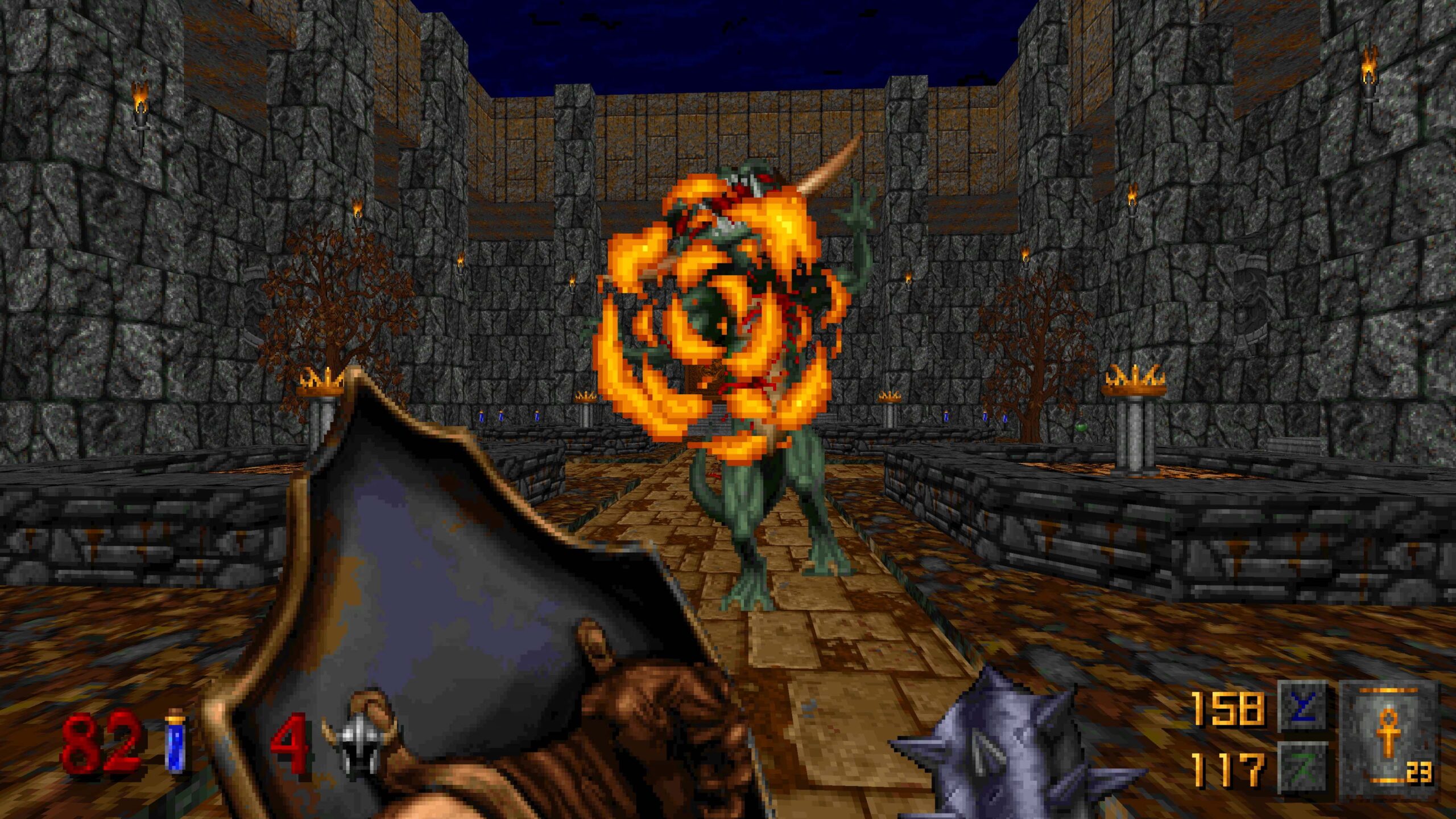
So yes, while the industry has evolved in amazing ways, there are lessons in Heretic and Hexen that are still incredibly relevant — about creative risk-taking, environmental storytelling, and treating your audience with respect.
What are some of your favorite memories from playing the original games, and what was it like to revisit those moments with these enhanced re-releases?
Kick: The first thing I remember about Heretic is the incredible box art illustration from [legendary fantasy artist] BROM! That image of Corvus blasting a hole through a skeletal warrior with an arcane bolt really painted a picture of what was to come. I installed a shareware copy and was immediately impressed by the art direction. The oppressive atmosphere, dark, winding corridors, and gothic architecture all worked seamlessly together to create a foreboding dread I found captivating.
One moment that always stuck with me was the first time I picked up the Phoenix Rod in Heretic. You go from flinging magic projectiles to unleashing this fire-spewing staff that just melts enemies — and it felt so powerful, like you’d uncovered an ancient weapon meant just for you. Or in Hexen, that moment you realize the levels are all interconnected through a hub, and you’re not just moving forward — you’re circling back, solving puzzles, and unlocking new paths. It felt revolutionary at the time — and honestly, it still holds up today.
What were some of your favorite or notable moments during the development of these restorations?
Developer Matthew Tropiano: One of my favorite moments from doing these was getting to revisit a lot of the maps in Heretic and Hexen and seeing what could be improved from the base game. In Hexen, we were able to put together a waypoint system of sorts on the automap so that players have an idea of what to do next in case they get lost. A lot of effort went into making that system a reality, so hopefully it helps at least a few players! Planning and developing a brand-new episode for Hexen was also a major highlight for me. I think players will enjoy being challenged by a brand new hub with cool new areas and places to explore.
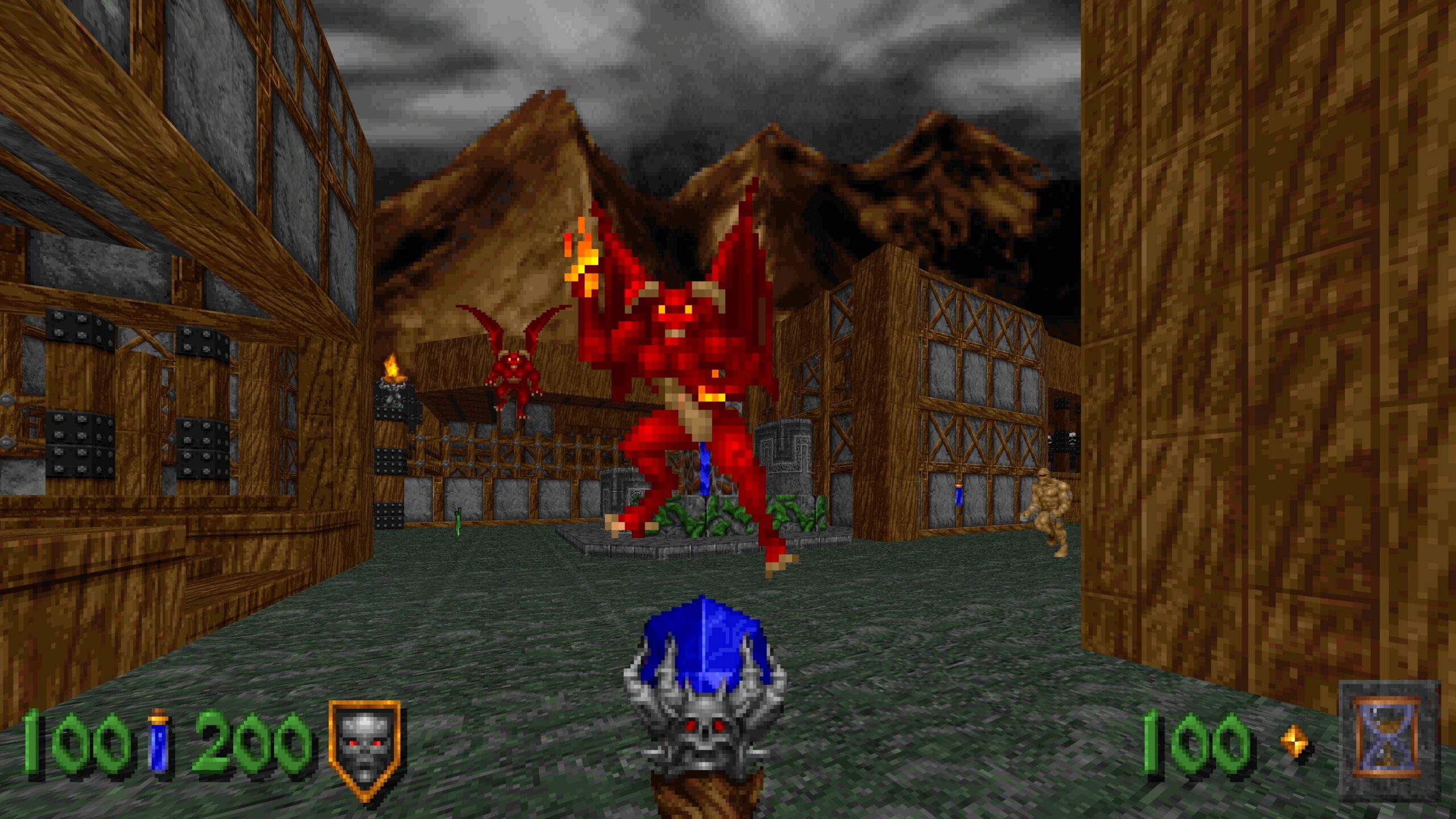
Developer Jaemen Moore: A polished-up version of Heretic’s original maps is something I’ve wanted to see for ages — sort of a more fully realized vision of what the original developers had in mind with their fantastic locales (e.g. doubling down on the aquatic/ocean theme for the Dome of D’Sparil episode). I even started a side project a few years back to make that dream a reality… and then this project happened, and I got the chance to make it for real. Surreal.
Nightdive Studios’ work on FPS remasters, and game preservation in general, has been incredibly impressive recently, from Dark Forces to System Shock and of course your work across DOOM I & II. What are some of the key learnings you’re taking from those development experiences here to Heretic + Hexen?
Tropiano: For me, much of what remastering is about is the question of striking the right balance between what to change and what to preserve. For Heretic + Hexen, we added a lot of new textures and graphics to Heretic that helped flesh out its locales, while also giving the community more resources to work with when creating new content. For Hexen, most of the changes focused on gameplay improvements. Players can still play the original games sans changes if they want to, but we feel that what we changed improves the experience of these titles.
Moore: The enhanced re-release of Quake II proved that it’s worth taking the time to see if the core gameplay can be improved, since the changes were received very well. Fortunately, this is one of those “have your cake and eat it too” moments — the original maps and gameplay balancing can be re-enabled via menu options, so folks can also experience it as it was back in the day.
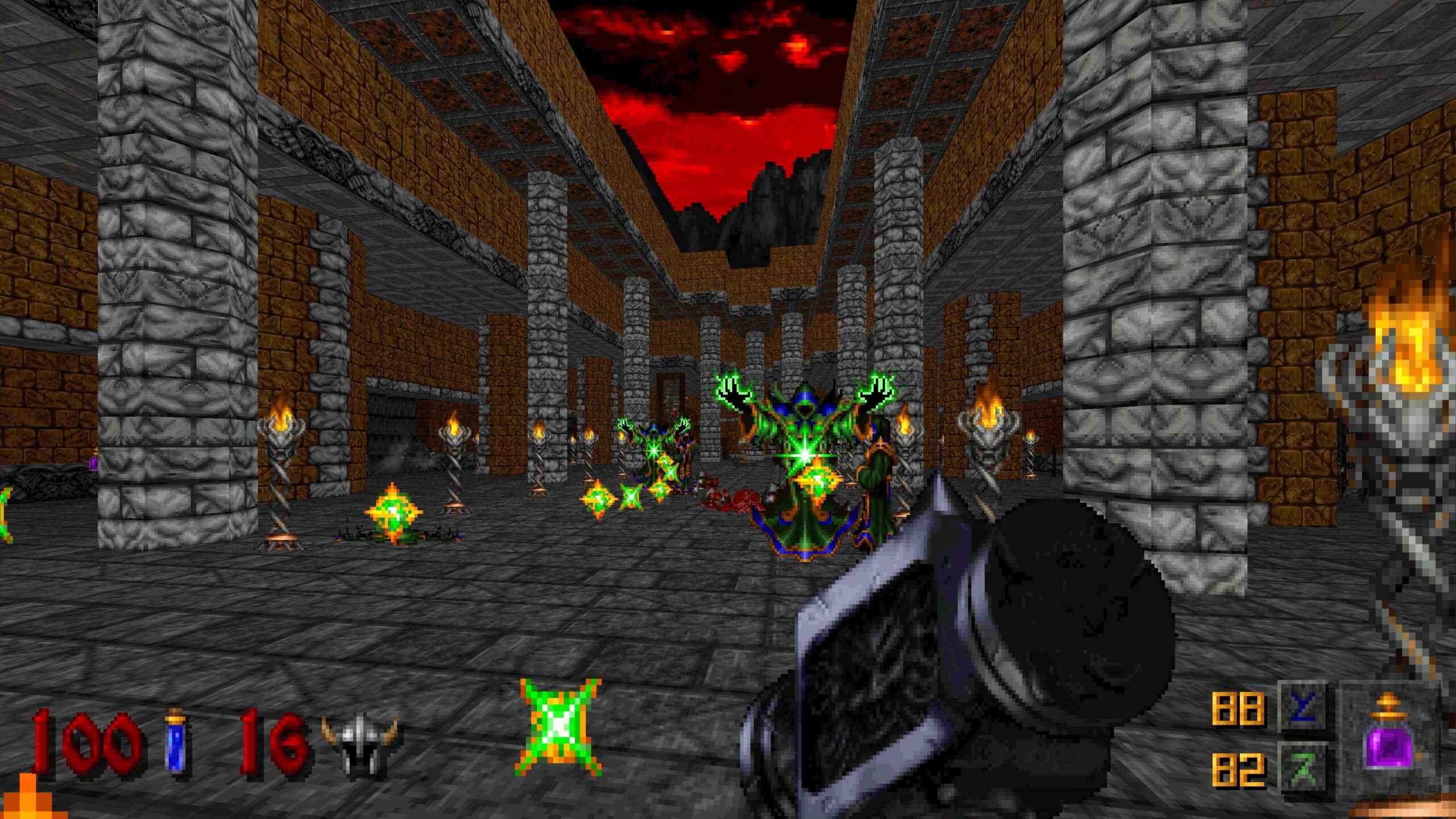
The original games were foundational in the FPS genre, with included features like inventory systems, weather events, ambient sound, being able to look up and down, and more. Are you bringing any additional tweaks here to refine those unique features further?
Tropiano: For the most part, simply elucidating the purpose of the inventory items at first glance and allowing the player to always look up and down with modern controls will benefit the experience quite a bit. Being somewhat cryptic was a hallmark of mid-’90s gameplay, but a lot of that limitation was due to what I feel was possible with the technology and sensibilities that were prevalent at the time.
Moore: One of the biggest additions we made to Hexen is adding the ability to change player characters mid-game (via the Hexen Chronicle, a magic tome you can find in each main hub map). It’s a simple addition, but it works wonders in practice. Each character plays very differently, and you can now play as all three over the course of the game, rather than being limited to just the same loadout for its entirety.
Could you talk about any of the additional quality of life and accessibility updates you’re bringing here to these enhanced re-releases?
Tropiano: Sure! We’ve added a modern font option to the game to make text easier to read for players who have difficulty with the original pixel font, along with a high-contrast mode for text. Players also have the ability to reduce some of the more intense effects and colors in the game.
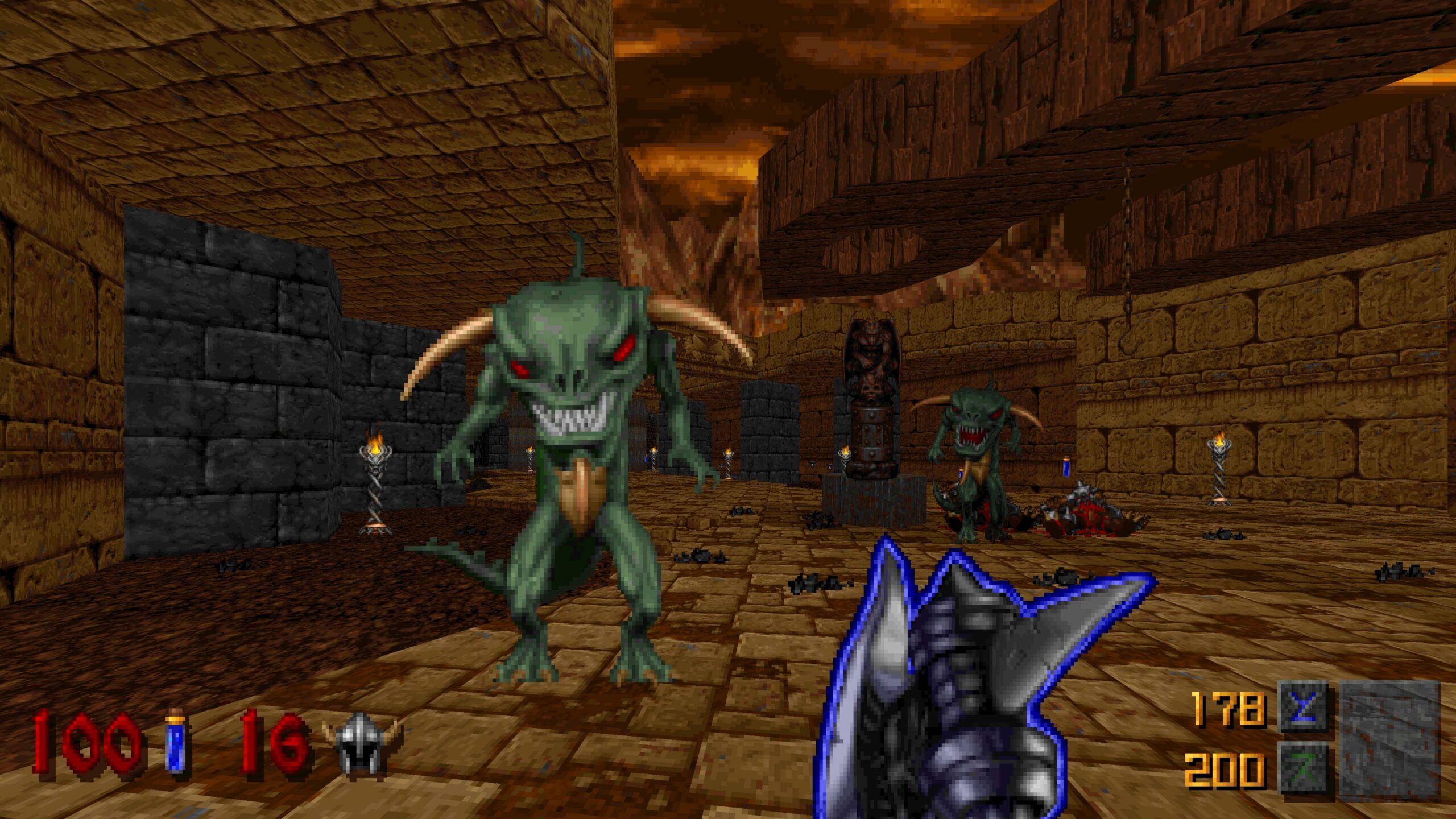
Moore: The automap waypoint system is worth another shout-out here. We’ve fixed up a few of the more obtuse parts of the level design, if that fails, the automap is there to bring you back on track. Or you can switch waypoints off via menu option if you’d prefer to navigate the old-fashioned way.
I understand there’s going to be an ‘enhanced soundtrack’ here as well. Is that going to be along the lines of what we saw with the soundtrack in DOOM I & II? Could you talk a little bit about the work that went into creating this enhanced Soundtrack?
Moore: Yup, exactly! Andrew Hulshult is back with a brand-new set of remixes, covering every single music track in both games. Calling it a “remix” isn’t even really doing them justice, like the compositions are insane (the spooky bells at the beginning of Mist, the track used in Heretic’s map The Cathedral, gives me chills every time). From our side, the process was to just sit back and let him work his magic, and the results speak for themselves. Players can opt into the original soundtrack, of course, but we’ve put the new tracks front-and-center ‘cause they damn well deserve it.
Could you share some more details about what the two brand-new episodes will be, how they came about, and any notable designers in the community you worked with here? Have any members of the original development team assisted here?
Tropiano: There were level designers (including myself) that wanted to work on something new for Heretic and Hexen. Kaiser (Sam Villareal) took point on the Heretic episode, while I handled the Hexen episode. We both enlisted the help of community member Not Jabba, as well as Heretic + Hexen lead Xaser Acheron for map design, and artist Arthur Biver for additional graphic work. As for the original developers — at least in my case — they “assisted” indirectly by inspiring some of the areas in the new episodes. We stand on the shoulders of giants, after all!
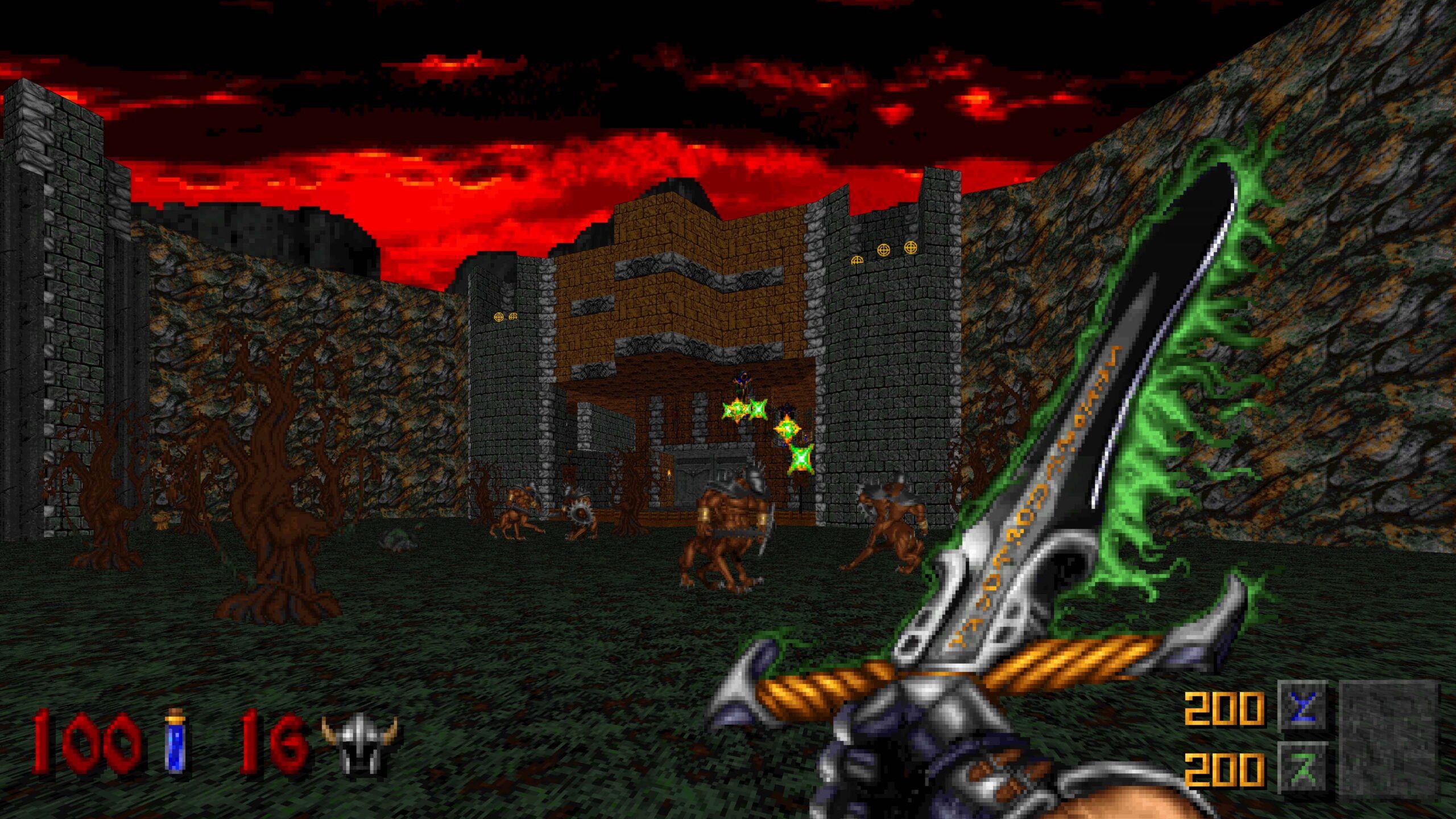
Moore: The new Heretic episode, Faith Renewed, features a ton of new textures and even a couple of new monsters (the Draugr and the Troll) based on unused artwork unearthed from the Vault. So, in a way, we did collaborate with the original Raven artists through time. It always amazes me how much gold there is to find in these old dev resources, and I’m psyched we were able to help bring some of this unseen art back to life.
Why was it important for you to launch these remasters with support for Community-Published Mods on day one?
Tropiano: While we have a lot of talent on our side for the remasters, there’s plenty of talent out there for people to explore outside of our purview. We want as much access to that work as possible, and it helps keep these games alive with fresh content to play!
Moore: It’s also worth noting that we were able to carry over quite a few modding features from DOOM + DOOM II to this project, since Heretic and Hexen are built upon the same engine. Mods are a huge part of what has kept these games alive for decades, and shipping without modding features would not only have been a huge step backwards, but we would’ve actually had to go back and remove features if we didn’t want them to ship.
The inclusion of behind-the-scenes content is a great addition for game history/preservation. Is there anything in there that you were particularly excited to include, or anything notable segments that you want to make sure readers check out?
Tropiano: For me, a lot of the Vault content I find interesting is the concept artwork and the graphics of props and other objects that didn’t make it in the original games. Whether that was due to not finding places for them, or they were cut for time, who knows? Either way, I think there will be a lot of Vault content that both players and the community find interesting.
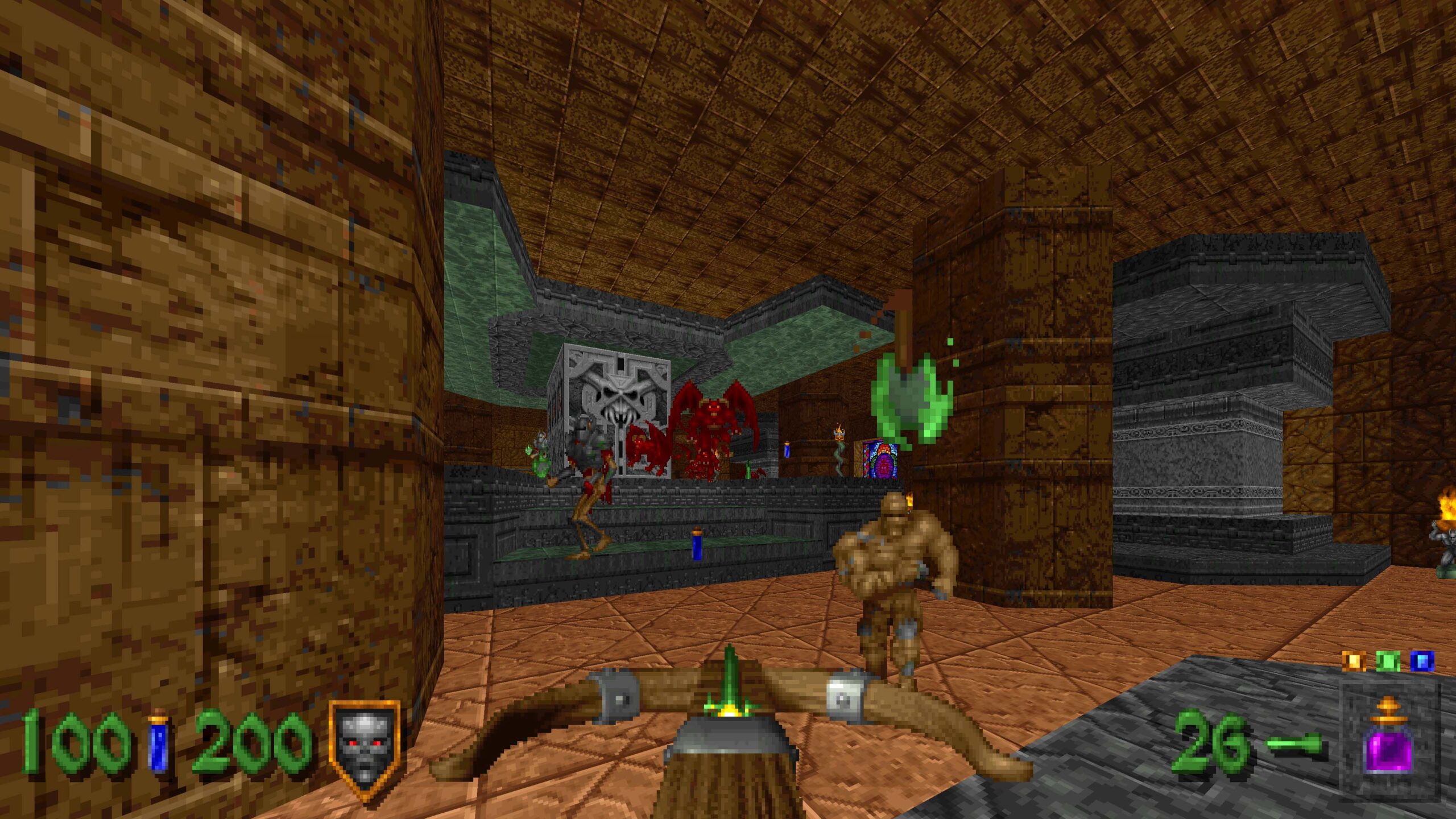
Moore: It’s always a bit surprising how many “production-quality” assets end up on the cutting room floor over the course of a game’s development cycle (due to changing designs, deadlines, and so forth), and I’ve been fascinated by the concept ever since discovering the old alpha versions of DOOM. I’m super excited that we got another chance to not only release these assets via the Vault but also incorporate many of them into both the new Faith Renewed episode and the retextures of the original Heretic levels.
The shadow-drop across so many platforms, from Xbox to Switch and Cloud, all at once must have been an exciting and daunting prospect. How did your team approach this challenge, and why choose QuakeCon to make this happen?
Kick: The Nightdive team is always up for a challenge, and thanks to our familiarity with the id Tech engine powering both Hexen and Heretic, we were beyond prepared. This will be our fourth shadow drop at QuakeCon, which has become an annual event for our team to come together and celebrate another stellar collaboration with Bethesda and id Software.
Heretic + Hexen is available today for Xbox One, Xbox Series X|S and Xbox PC (as an Xbox Play Anywhere title, and available with Game Pass) as well as PlayStation 4, PlayStation 5, Nintendo Switch, Steam, GOG, and cloud streaming services.

Heretic + Hexen
Bethesda Softworks
Owners Receive
• Heretic: Shadow of the Serpent Riders
• Hexen: Beyond Heretic
• Hexen: Deathkings of the Dark Citadel
• Two all-new episodes created in collaboration between individuals at id Software + Nightdive Studios:
o Heretic: Faith Renewed
o Hexen: Vestiges of Grandeur
© 2025 ZeniMax Media Inc. id, id Software, Bethesda, Bethesda Softworks, and ZeniMax are trademarks of the ZeniMax group of companies. All rights reserved. HERETIC and HEXEN are trademarks of Activision Publishing, Inc. HERETIC and HEXEN: BEYOND HERETIC © 1994-2020 Raven Software. All rights reserved.
.post-template-default .xwsrc-block-content-block .wp-block-column.flex-basis-50.push–25.column–content {
flex: 100%;
margin-left: 0;
}
The post Heretic + Hexen Gets a Surprise Re-Release: How Nightdive Studios Delivered Another Definitive Version of a Classic appeared first on Xbox Wire.




